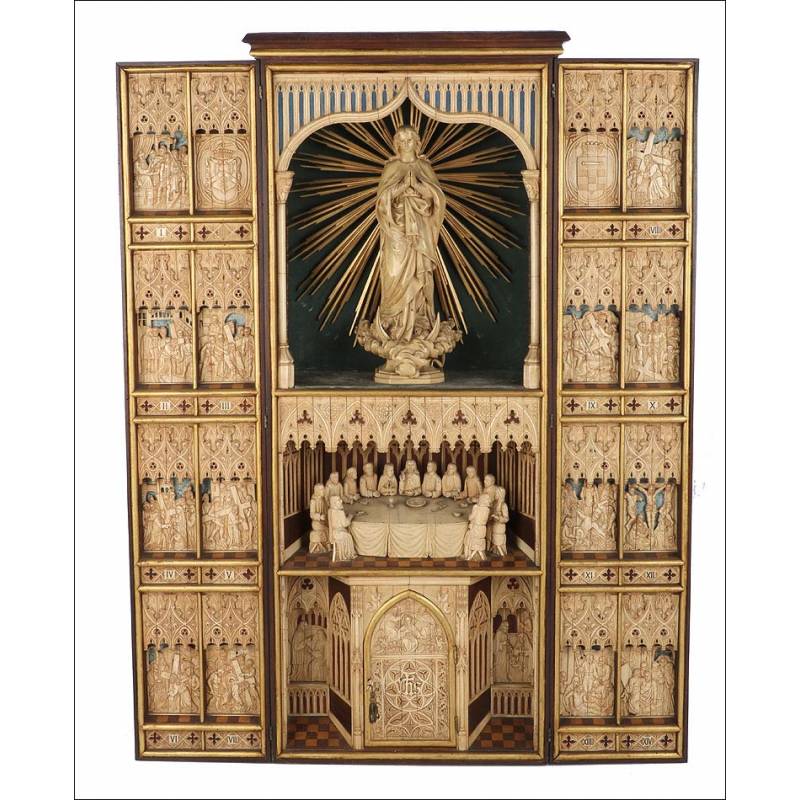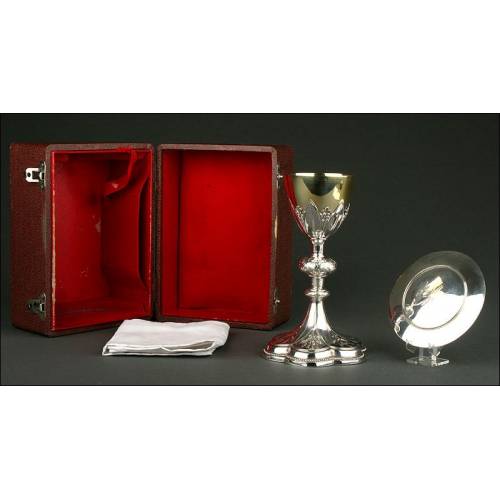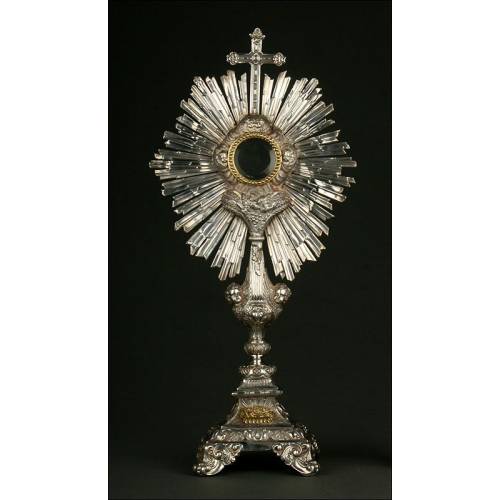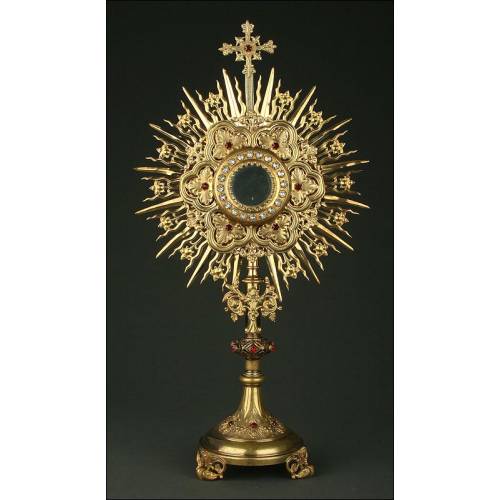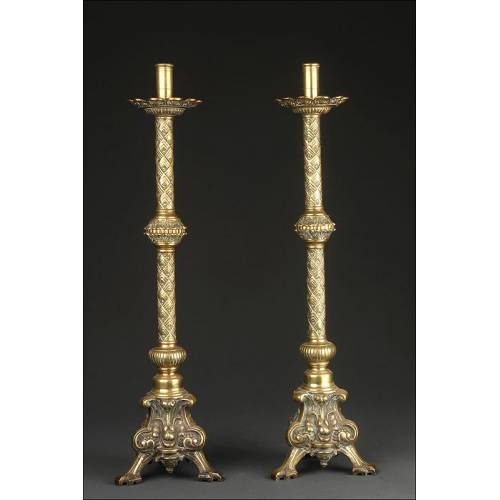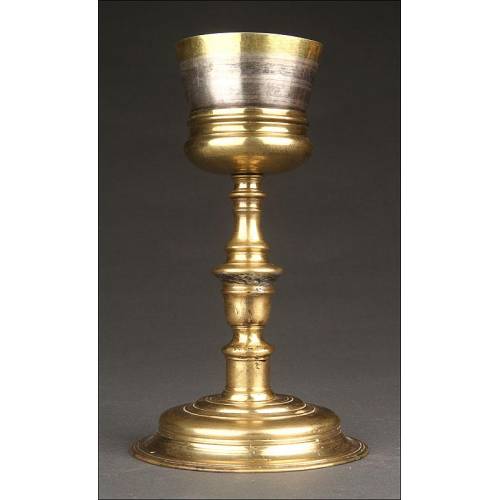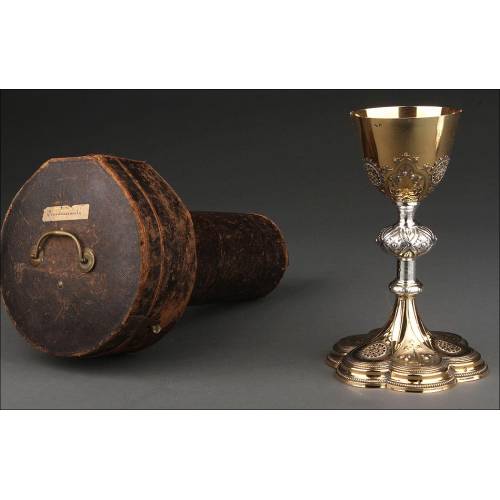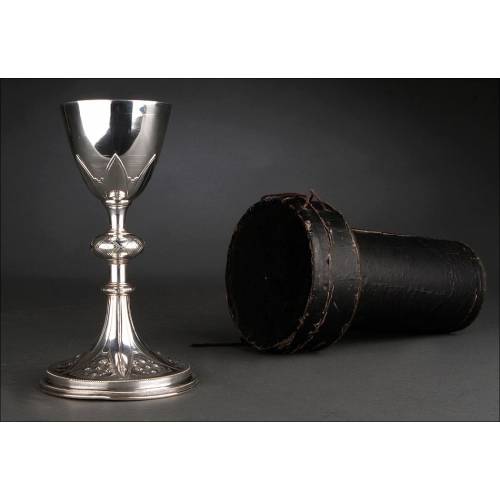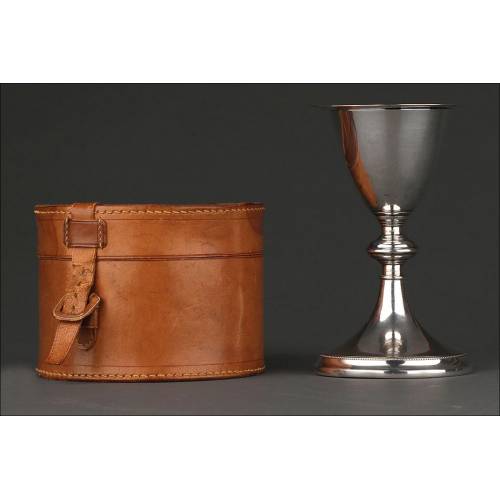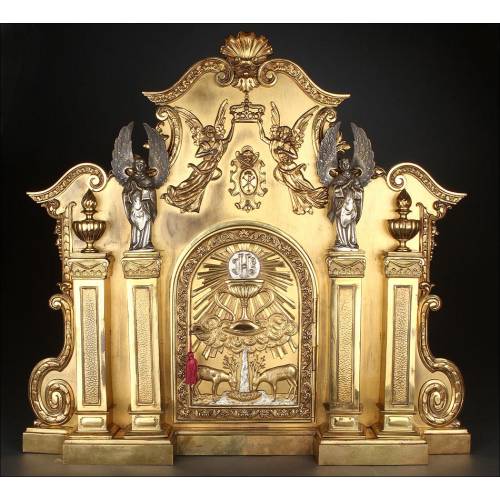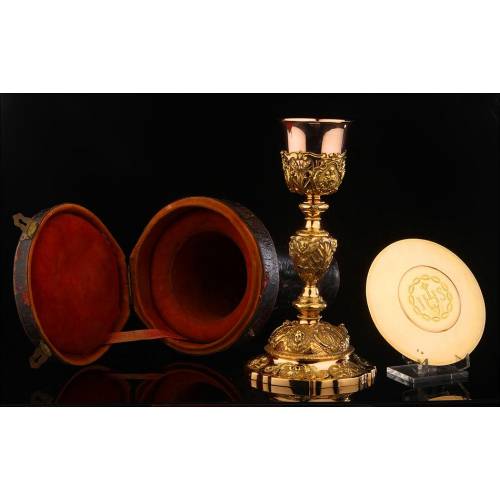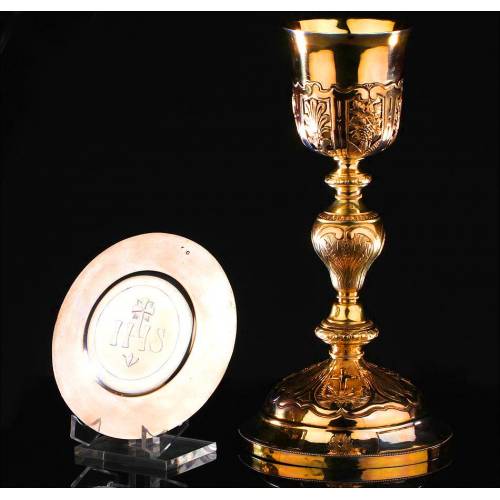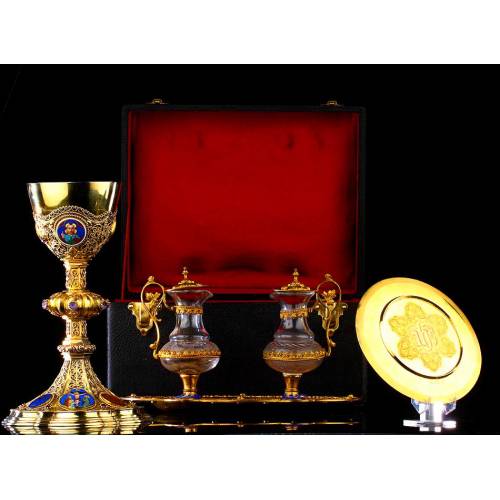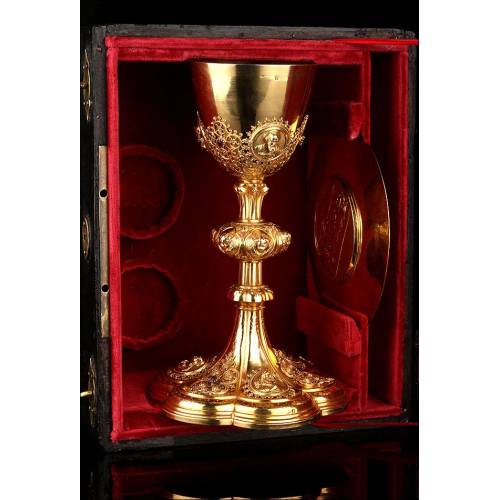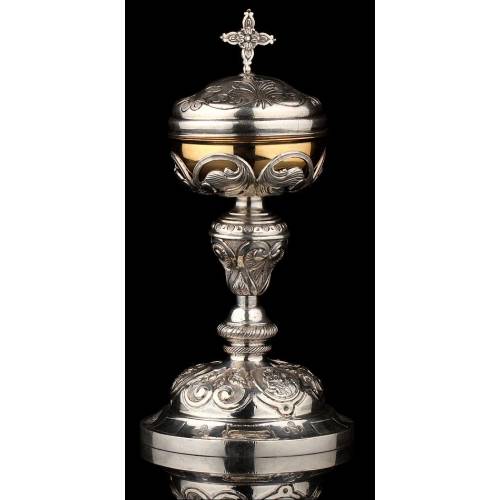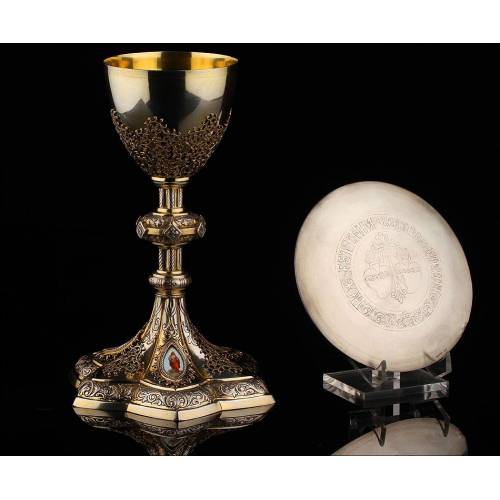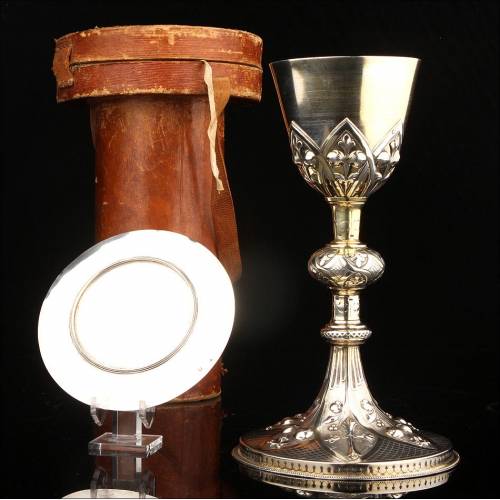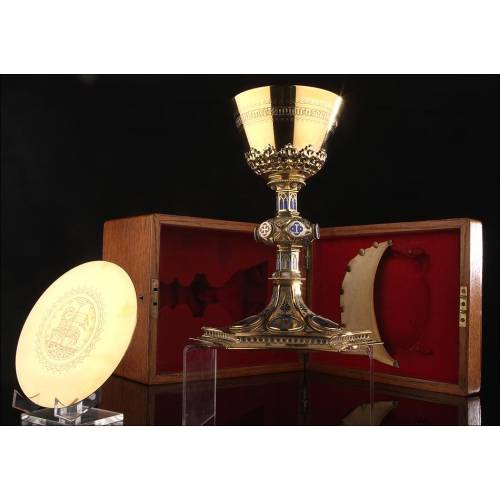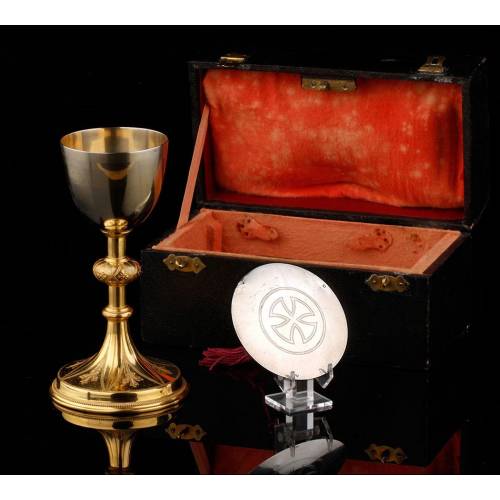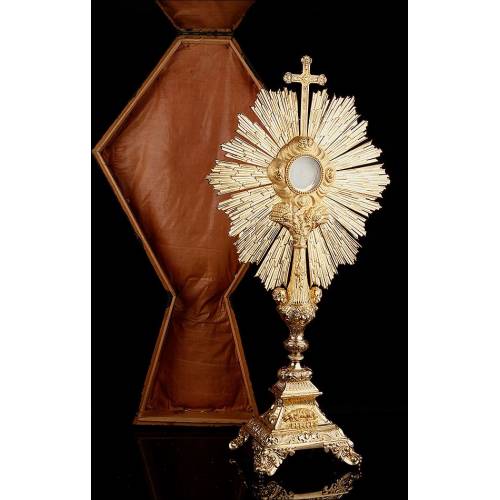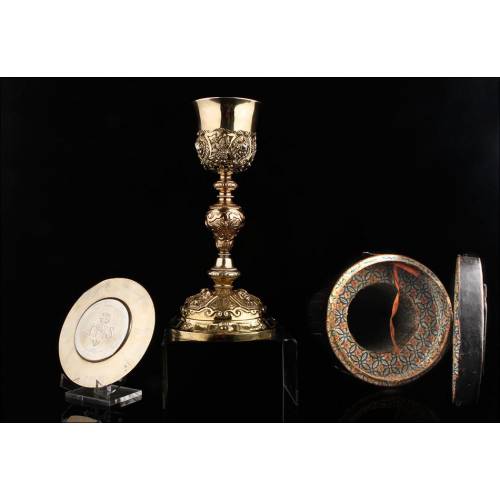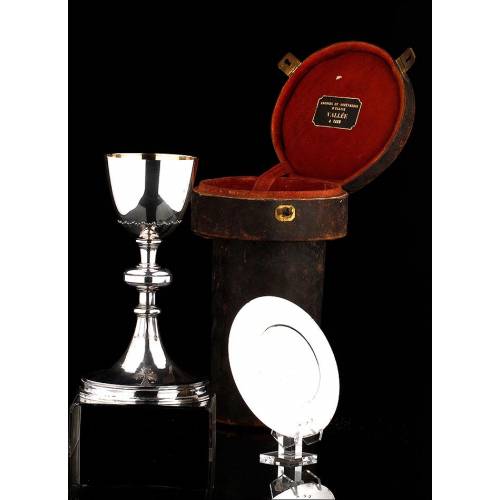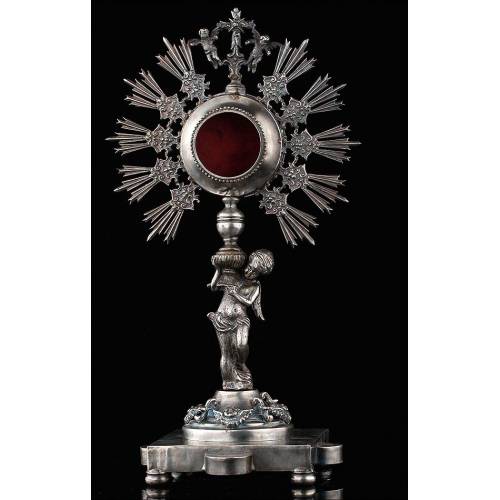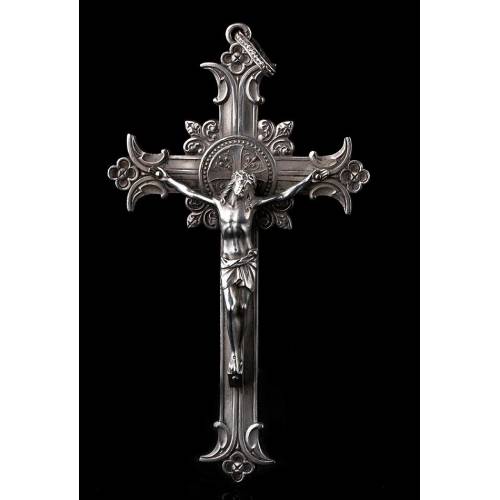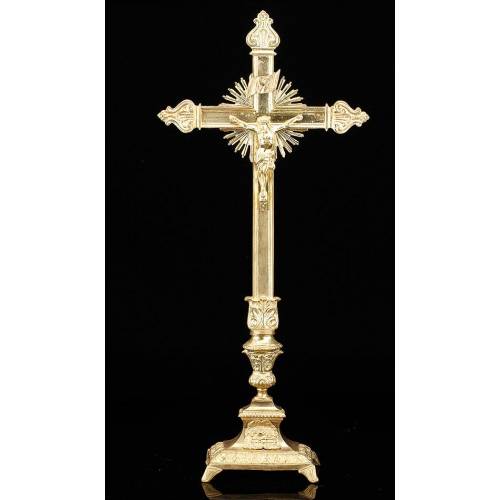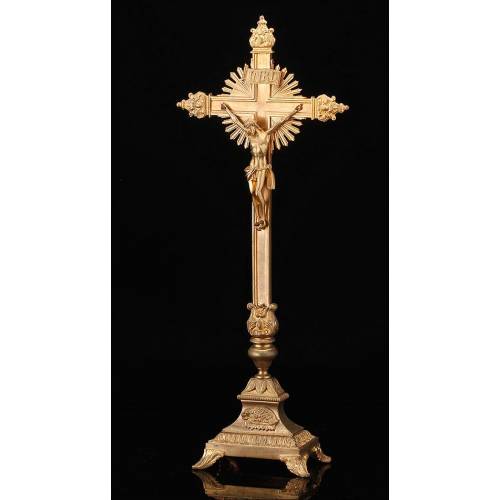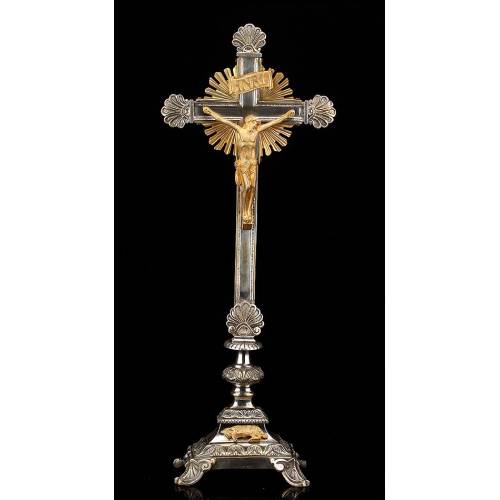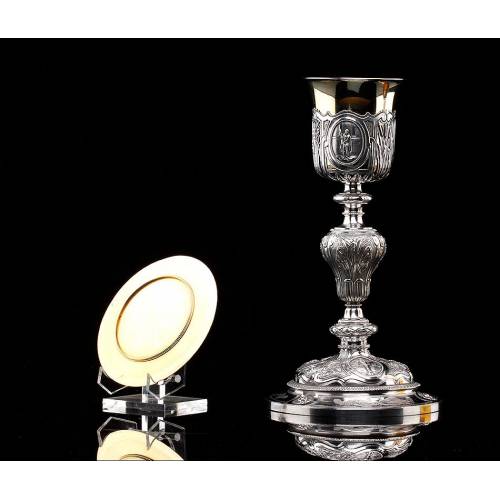C-870
Historic Chapel of the Count of Trénor. Portable. Valencia, Spain. Circa 1900
Spectacular and antique portable chapel with tabernacle carved in ox bone. Once belonged to the Count of Trénor. Magnificent condition.
Sold!
Amazing portable chapel with tabernacle that once belonged to the Count of Trenor. This spectacular piece was made in Valencia, Spain circa 1900 and has survived to our days in striking condition. It is completely made of hand-carved ox bone except for the figure of the Immaculate Conception Virgin image, which is made of solid wood with a painted finish imitating the color and texture of the bone. This majestic item is also a historic piece, as it once belonged to Vicente Trévor Palavicini (1865-1938), a relevant member of the aristocratic Valencian Trénor family. He was Marquis of Sot, Count of Trénor and Marquis of Sardañola (consort). He was also a deputy at the Valencian Courts from 1924 to 1927 and Vice-President of the Valencia Regional Council (sourceReal Academia de la Historia - http://dbe.rah.es/biografias/57463/vicente-trenor-palavicino). At the top left side of the chapel we can see the carved coat of arms of the Count of Trénor, just beside the Virgins niche. At the top right side we can see another coat of arms: though it cannot be precisely identified, it does show some similarities with the municipal coat of arms of the city of Sardañola. So it could be the heraldic shield of the so-called marquisate. Nevertheless, we must state that this is just a hypothesis. Apparently, after the count died in 1938 his heirs took the piece to the Spanish Ministry of Education to guarantee its preservation during the Spanish Civil War. It is possible that it is catalogued as National Heritage, so for its exportation outside Spain an official permit from the Institution will be required, something we will do if the buyer is from outside Spain.At the back of the chapel we can see a handwritten paper label stating the deposit, reading the following: National Ministry of Education Service for the Defence of the National Artistic Heritage (Deposit for its preservation during the Spanish Civil War). Today the chapel is wonderfully preserved and shows no broken, replaced or missing part. The chapel is rectangular in shape, with a main central body and two side ones. The central body is subdivided in three niches. The top niche contains the gorgeous image of the Virgin, adorned with a series of gold-leaf-covered wooden sunrays on a blue background. It is a high-quality wooden carving framed by two pillars and a contra-curved arch, all of them made of hand-carved bone. The arch is embellished with blue vertical stripes. Finally, the bottom niche contains the tabernacle, a compartment meant to store the ciborium and closed by two gothic-style bone doors decorated with fine bas-reliefs. The doors preserve the original lock and key (the key seems to be made of pressed resin, instead of bone). Framing this central body we can see the side ones, composed of panels with carved stations of the Via Crucis, a complete Via Crucis with its 14 stations . All the bone pieces are disposed on a solid-wooden structure covered in gold leaf. This striking portable chapel with tabernacle which once belonged to the Count of Trénor is a real museum piece, an exceptional work if art which deserves a special piece in any upscale collection. Measurements: Width: 39.8 in / 99 cm. Height: 52 in / 130 cm. Depth: 10 in / 25 cm.Shipping costs: Shipping costs depend on the country of the buyer. To Spain is free and in hand. To the rest of the world varies from country to country. Additionally, as we have already said, this piece can be Spanish National Heritage and a special permission is necessary for its export, which will be managed after the purchase, since it also varies depending on the country of the buyer. This permit takes a few weeks to be issued.

